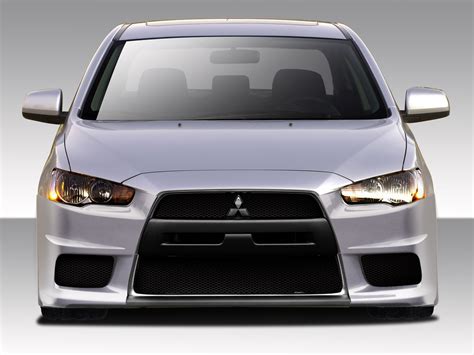Mitsubishi Lancer evo problems

The Mitsubishi Lancer Evolution, popularly referred to as the 'Evo', is a sports sedan and rally car based on the Lancer that was manufactured by Japanese manufacturer Mitsubishi Motors from 1992 until 2016. There have been ten official versions to date, and the designation of each model is most commonly a Roman numeral. All generations use two-litre intercooled turbo inline four-cylinder engines and all-wheel drive systems.
The Lancer was originally intended only for Japanese markets, but demand on the "grey import" market led the Evolution series to be offered through Ralliart dealer networks in the United Kingdom and in various European markets from around 1998. Mitsubishi decided to export the eighth generation Evolution to the United States in 2003 after witnessing the success Subaru had in that market the previous year with the Subaru Impreza WRX.
All domestic-market versions, until the release of the Evolution IX in 2005, were limited by a gentlemen's agreement between Japanese car manufacturers to advertise no more than 280 PS (206 kW; 276 hp). However, sources say Mitsubishi had already been producing cars with more power but had been underrating the official power outputs in order to comply with the agreement. Therefore, each subsequent version has unofficially evolved above the advertised power figures, with the Japanese-market Evolution IX reaching an alleged output of around 321 PS (236 kW; 317 hp). Various special versions available in other markets, particularly the UK, have official power outputs up to 446 PS (328 kW; 440 hp).
The tenth and final generation of the Lancer Evolution, the Evolution X, was launched in Japan in 2007, and overseas markets in 2008. The Evolution X was produced for almost 10 years until Mitsubishi retired the Lancer Evolution in April 2016.

Social links
Mitsubishi Lancer evo model years





Common Mitsubishi Lancer evo problems
The Mitsubishi Lancer Evolution, often referred to as the Evo, is a high-powered sports car that requires regular maintenance and care. One of the most common problems with the Lancer Evos is related to the transmission, particularly in cars with the Continuously Variable Transmission (CVT) that are notorious for dying around 100,000 miles. Transmission replacement is an expensive repair, but regular transmission fluid flushes and changes can help prolong the transmission's life.
Another issue to consider is the engine's robustness. While the engine is generally reliable with proper maintenance, it's not as fuel-efficient as other cars, with an average of 20 miles per gallon in the city and 25-26 miles per gallon on the highway.
When it comes to the Lancer Evolution's suspension, a common problem is a knocking noise coming from the suspension, which is an indication of a problem with the front suspension struts. This issue can be resolved by lubricating the struts, which is not a major problem.
Additionally, a whining noise coming from the gearbox can indicate a problem with the gearbox output shaft bearings failing, which is a common symptom in these vehicles. To stop the noise, replacement output shaft bearings need to be fitted.
The climate control system can also cause problems, with a fishy smell coming from the climate control when turned on. This is a common occurrence on these vehicles and is caused by the evaporator drain hole being blocked. Unblocking the evaporator drain hole will stop the bad smell.
The idle control valve can fail, causing the car to idle at a higher RPM when the fan or air conditioning is turned on. The first step to fixing this issue is to remove the idle control valve and clean it. If this does not work, the valve will need to be replaced to fix the problem.
Finally, the actuator is known to fail on the Lancer Evolution, causing sudden jolts or boosts after a slight power loss at high revs. Fitting a replacement actuator will resolve the issue.
In summary, while the Mitsubishi Lancer Evolution is a high-powered sports car that requires regular maintenance, common problems include transmission issues, engine fuel efficiency, suspension knocking noise, whining noise from the gearbox, fishy smell from the climate control, idle control valve failure, and actuator failure. Regular maintenance and addressing these issues promptly can help ensure the longevity and reliability of the vehicle.

Is a Lancer Evo a reliable car?
Despite what you may have heard, the Evo X has a stellar reputation for reliability. The stock aluminum 4B11T engine can easily handle 400-plus horsepower with a larger-than-stock turbo and decent tune. Non-modified cars will soldier on well past 100,000 miles with only minimal maintenance–and lots of new tires.
What are the most common problems with Mitsubishi Lancer?
Mitsubishi Lancer Common Problems and Solutions
- Slow Fan Speed and Ventilation Loss. Problem: ...
- Steering is Pulling. Problem: ...
- Brake Failure. Problem: ...
- Engine Stalling. Problem: ...
- Check Engine Light and 'Slow Down' Warning. Problem: ...
- Oil Leak. Problem: ...
- Starting problems. Problem: ...
- Air conditioning failure. Problem:
What is the best year of Evo?
1999 Mitsubishi Lancer Evolution VI
This is, to the hardcore purists, the finest incarnation of the Evo, and the last version with a direct link to motorsport. It was also released at the peak of the Mitsubishi vs Subaru debate and offered a more-than-robust challenger to the mighty Impreza.
What is the life expectancy of a Mitsubishi Lancer Evolution?
With simple maintenance and sensible driving, the Mitsubishi Lancer is a fairly reliable car that can last between 150,000 and 200,000 miles with routine maintenance.
Are you having problems with your Mitsubishi Lancer evo?


